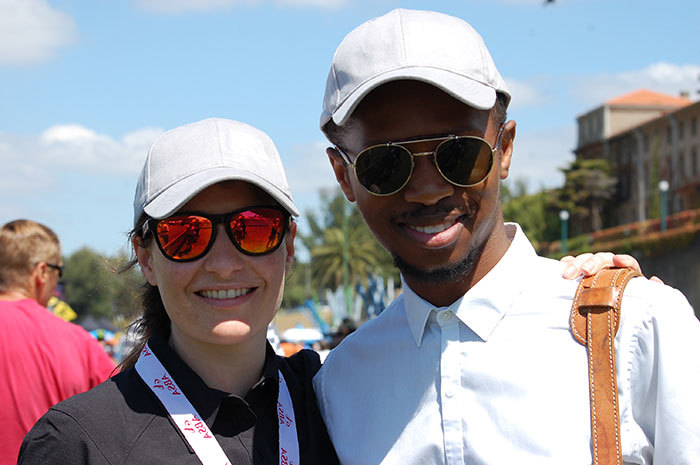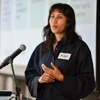From UCT to your TV: An inside look at the Cape Epic media coverage
16 March 2015 | Story by Newsroom
Rifumo Mdaka, a third-year student in Media Studies at UCT, had the opportunity to visit the Absa Cape Epic Media Centre during the Prologue hosted at UCT on Sunday. Here is his story.
Covering the world's most televised mountain bike race may seem like a daunting task, but if my experience at the Absa Cape Epic Prologue at UCT has taught me anything, it's that all it takes is a team effort.
On Sunday 15 March, over 1 200 bikers took to the dirt along Table Mountain after traversing the UCT grounds. Around 60 international and 40 local journalists were at the ready to capture all the cycling action from the early hours of the morning right into the late afternoon.
Cape Epic Marketing and Communications Manager Sarah Harrop is on her feet throughout the morning ensuring that riders, sponsors and fans alike are enjoying what is her ninth Cape Epic. Later, I am introduced to her and she explains her responsibilities to me. Every poster, press release, advertisement and social media decision is her job to manage – which is an epic challenge in itself.
The day before the event, I familiarised myself with Cape Epic's website. The site gives you a simple overview of the entire event but Sara points out a nifty feature – a livestream along with a 'biker-livetracking' feature powered by Tracker. The need for the livestream is more than just a convenience in case fans can't reach a television; since DStv subscribers are the only people who get to watch the Prologue live on Supersport 7, the rest of the world get to tune in via the website's livestream.
Supersport plays an integral role at the Cape Epic. By Thursday (three days before the race), Supersport's two state-of-the-art outdoor broadcast (OB) trucks had begun camping out at UCT's upper campus – these trucks are the life of the live broadcast. Sara kindly arranged for me to take a tour inside one of the trucks and, if I hadn't known any better, I would have believed that I was entering a spaceship.
Over 20 people are responsible for running this 'spaceship' and it's a mammoth task. The Supersport OB truck team is monitoring, syncing, editing, colour-correcting, directing and uploading feeds from 18 cameras (split between crew members on the ground, radio frequency cameras planted along the mountain, and a helicopter camera). A director and VT (video tape) operator work in tandem to decide what appears on your home television when you tune in to Supersport 7 to watch the Cape Epic.
The budget for staging an operation as large-scale as this is set to the tune of R3 million; but the experience of having learned about the media machine behind the world's most televised mountain bike race is invaluable.
Story by Rifumo Mdaka (a third-year student in Media Studies at UCT). Photo by Petro Mostert.
 This work is licensed under a Creative Commons Attribution-NoDerivatives 4.0 International License.
This work is licensed under a Creative Commons Attribution-NoDerivatives 4.0 International License.
Please view the republishing articles page for more information.










